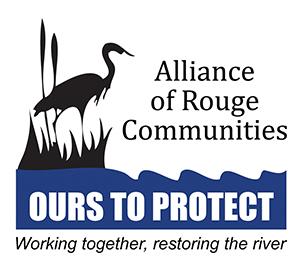 History of the ARC
History of the ARC
Working Together, Restoring the River
The Rouge River watershed, located in southeast Michigan , runs through the most densely populated and urbanized land area in the state. The watershed is approximately 438 square miles in size and includes all or part of 48 municipalities in three counties, with a population of over 1.4 million. The industrial growth of the lower Rouge River in the first half of the twentieth century and the rapid residential and commercial growth in the last half of the century in the upper portions of the watershed created serious pollution problems. Despite pollution control efforts as early as the 1940s, when the Detroit wastewater treatment facility was built to serve southeast Michigan including many of the Rouge River watershed communities, pollution problems increased in the river. It has only been in the last decade that significant restoration of water quality has begun to be documented as a result of over one billion dollars of investments by area residents for pollution control. Cooperative efforts at the local level to restore the Rouge River began in early 1980s. At the urging of local citizens and organizations the State of Michigan adopted the Rouge River Basin Strategy in 1985.The Alliance of Rouge Communities (ARC), a 501(c)(3) Non-profit Organization, is a voluntary public watershed entity currently comprised of 35 municipal governments (i.e., cities, townships, and villages), 3 counties (Oakland, Wayne, and Washtenaw), 3 educational institutions (Henry Ford College, Schoolcraft College and University of Michigan-Dearborn) and the Wayne County Airport Authority as authorized by Part 312 (Watershed Alliances) of the Michigan Natural Resources and Environmental Protection Act (MCL 324.101 to 324.90106) as amended by Act No. 517, Public Acts of 2004.
Officially formed in January of 2006, the ARC members represent public agencies with water management responsibilities whose jurisdictional boundaries are totally or in part located within the Rouge River watershed located in southeast Michigan . The state law authorizing the formation of watershed alliances throughout Michigan was modeled after a Memorandum of Agreement (MOA) adopted by the Rouge River watershed communities and counties in August of 2003, which successfully guided a regional effort over a three year period to address watershed-wide water quality and water quantity issues.
The 2003 MOA was developed by the communities and the three counties to respond to declining federal grant funds to Wayne County for the Rouge River National Wet Weather Demonstration Project that had supported watershed-wide management efforts since 1993. During the three years of operation under the MOA, the Rouge River watershed communities voluntarily contributed nearly $900,000 to match available federal funding for cooperative watershed management activities. The first year budget for the ARC (2006) is approximately $600,000 with fifty percent local and fifty percent federal funding.
Under the 2005 ARC bylaws all cities, townships and villages as well as the counties located totally or in part within the Rouge River watershed are eligible for membership. Over 95 percent of the eligible communities and counties have adopted the bylaws through formal action of their respective governing authorities. In addition, the bylaws provide for membership of other public entities in the watershed who under state law are required to have a water discharge permit. Several public agencies are still considering membership.